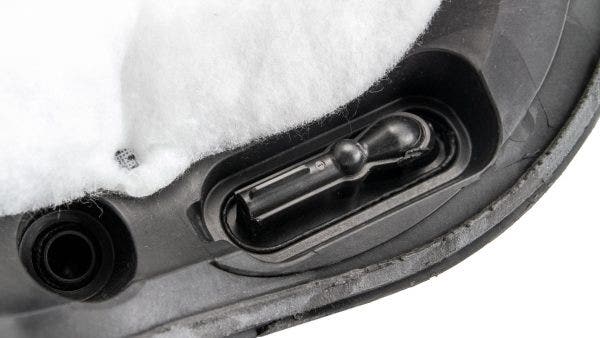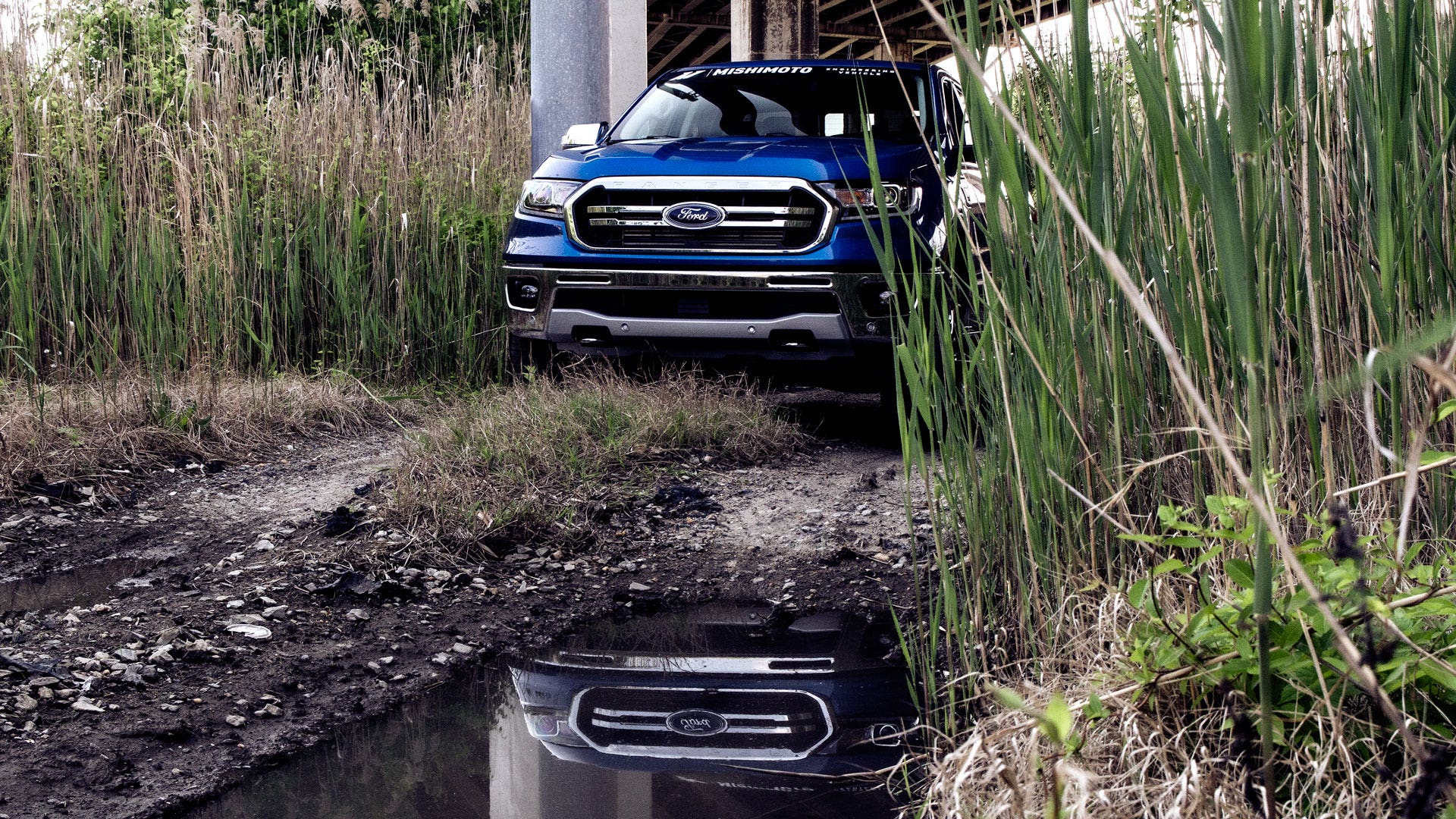
Take in the World - Intake R&D Part 1: Stock Review
From the crisp, cool air atop Pikes Peak to the smell of freshly cut grass at Fenway Park. From the hard asphalt streets of New York City to the soft sand of the Mojave. No
matter where you are or where you're going, the 2019+ Ford Ranger was built to take in the world.
While we take in the world with our sense of touch, sight, taste, and smell, your 2019+ Ranger takes in the world through its air intake. Air flows into the intake, gets compressed by the turbocharger, and is then forced into the engine. The better the intake flows, the more air can get into the turbocharger and the more air goes into the engine. More air going into the engine means more fuel can be injected, and more fuel equals more power.
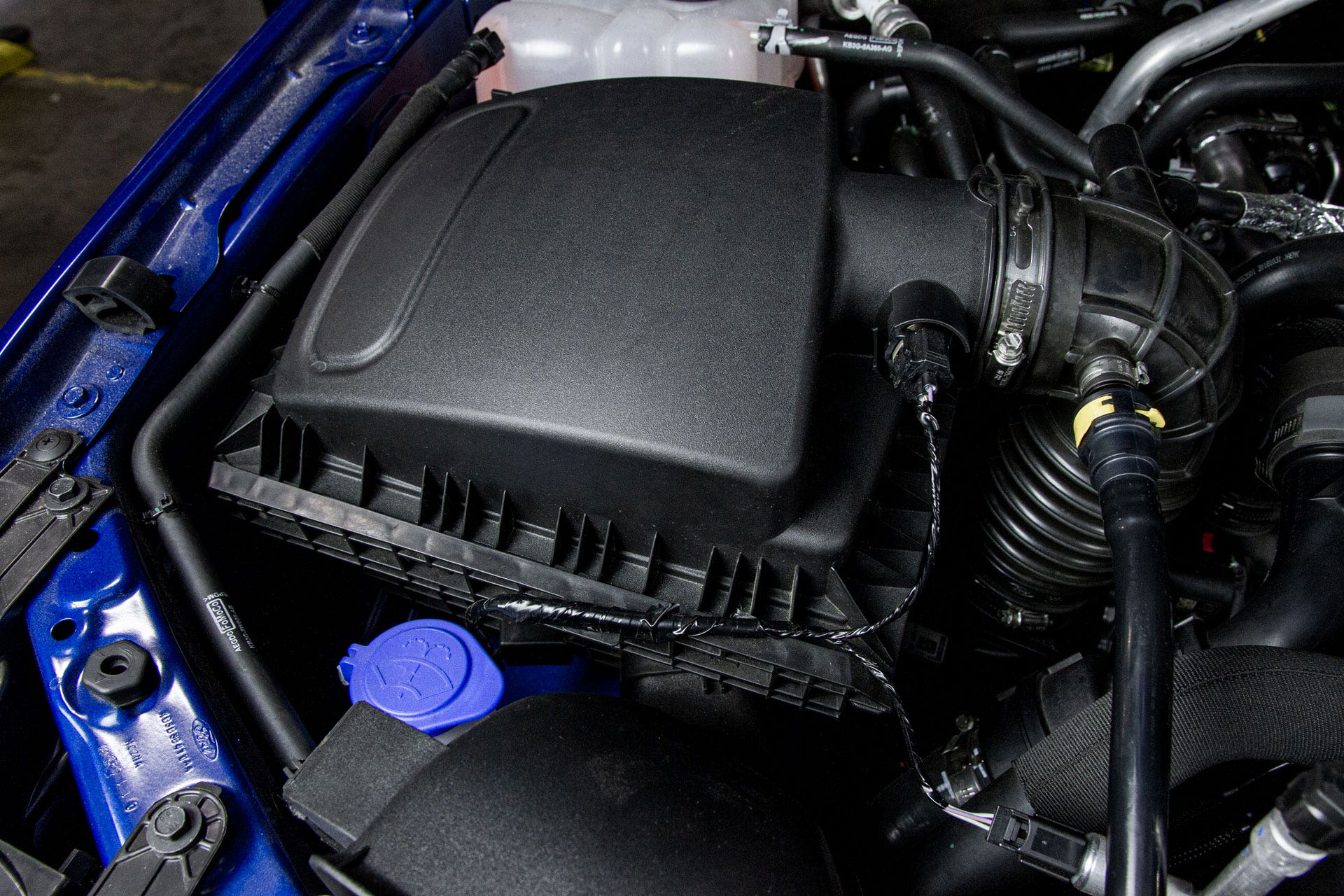
Improving flow through the intake is one of the best ways to improve performance. While the stock intake on the 2.3L EcoBoost under the hood of the 2019+ Ranger is well
designed, we think we can make it better. But, before we start building an improved intake, we need to look at the stock intake to know what can be improved.
To analyze the stock intake, we started by 3D scanning the intake while it was still installed on the truck. This scan told us how much clearance the stock intake had between all the other components in the engine bay. A second scan of the area with the intake removed gave us our envelope"the space that our replacement intake could occupy.
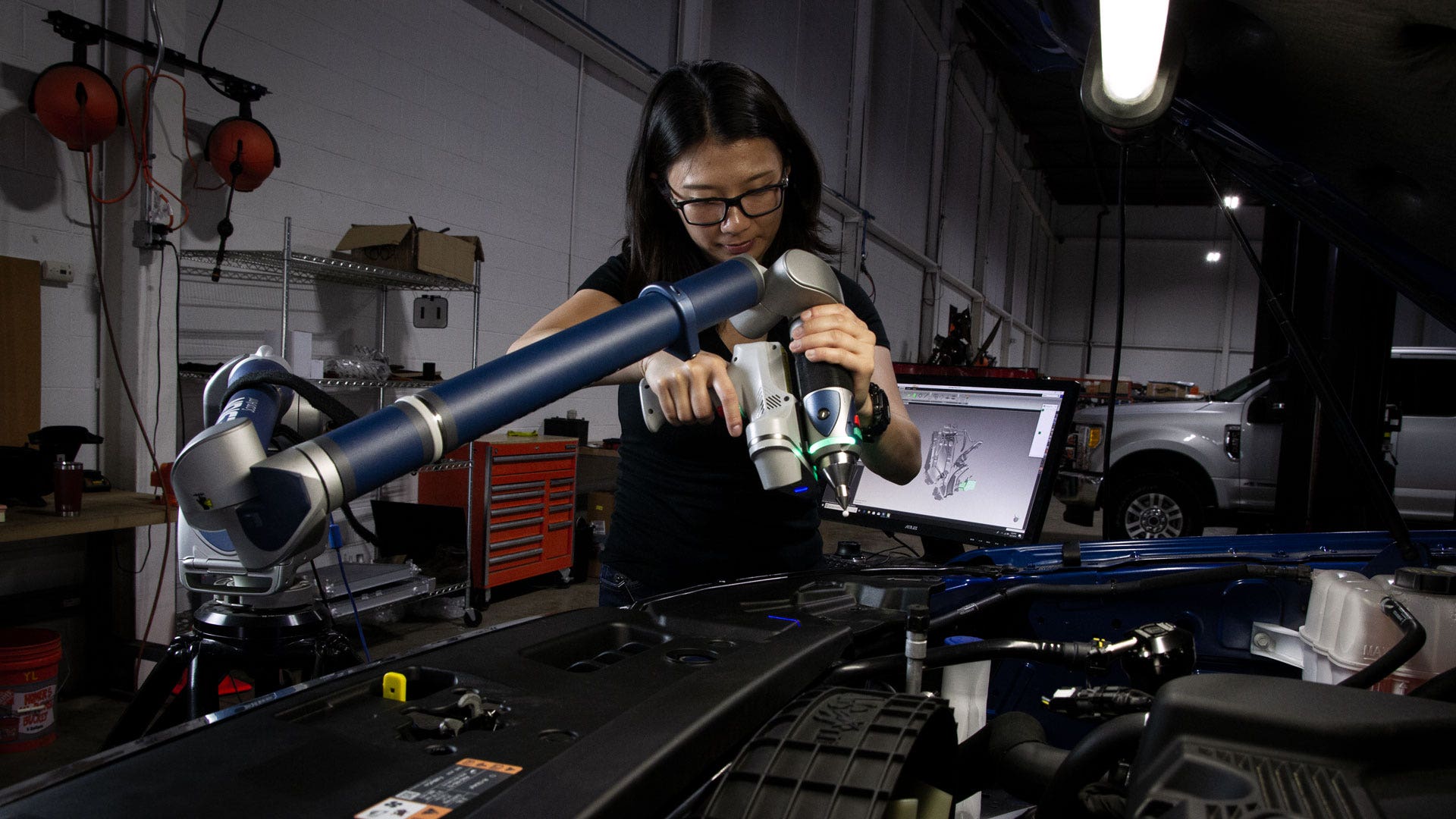
With the stock intake out of the vehicle, we could also see all the elements that may need to be improved. When the intake is installed in the Ranger's engine bay, it looks unassuming and bland. A box with a tube on it, basically. But when you remove it, you can see just how much lives under the surface.

Air begins its journey through the intake by entering a duct under the hood. Fresh outside air is directed into the bottom of the airbox and pulled up through the air filter. From there, the air passes over the first of the major intake components. The intake air temperature sensor performs the simple yet crucial role of communicating the air temperature to the powertrain control module (PCM). The 2019+ Ranger uses a fueling strategy called "speed density." This method calculates the exact amount of fuel needed to create efficient combustion based on how much air is entering the cylinder and what temperature that air is. Air density increases as temperature decreases, which is why engines generally run better with colder air, and why the intake air temp sensor is so important. This sensor, along with a similar sensor in the intake manifold, tells the powertrain control module how dense the intake air charge is and completes part of the fueling equation.
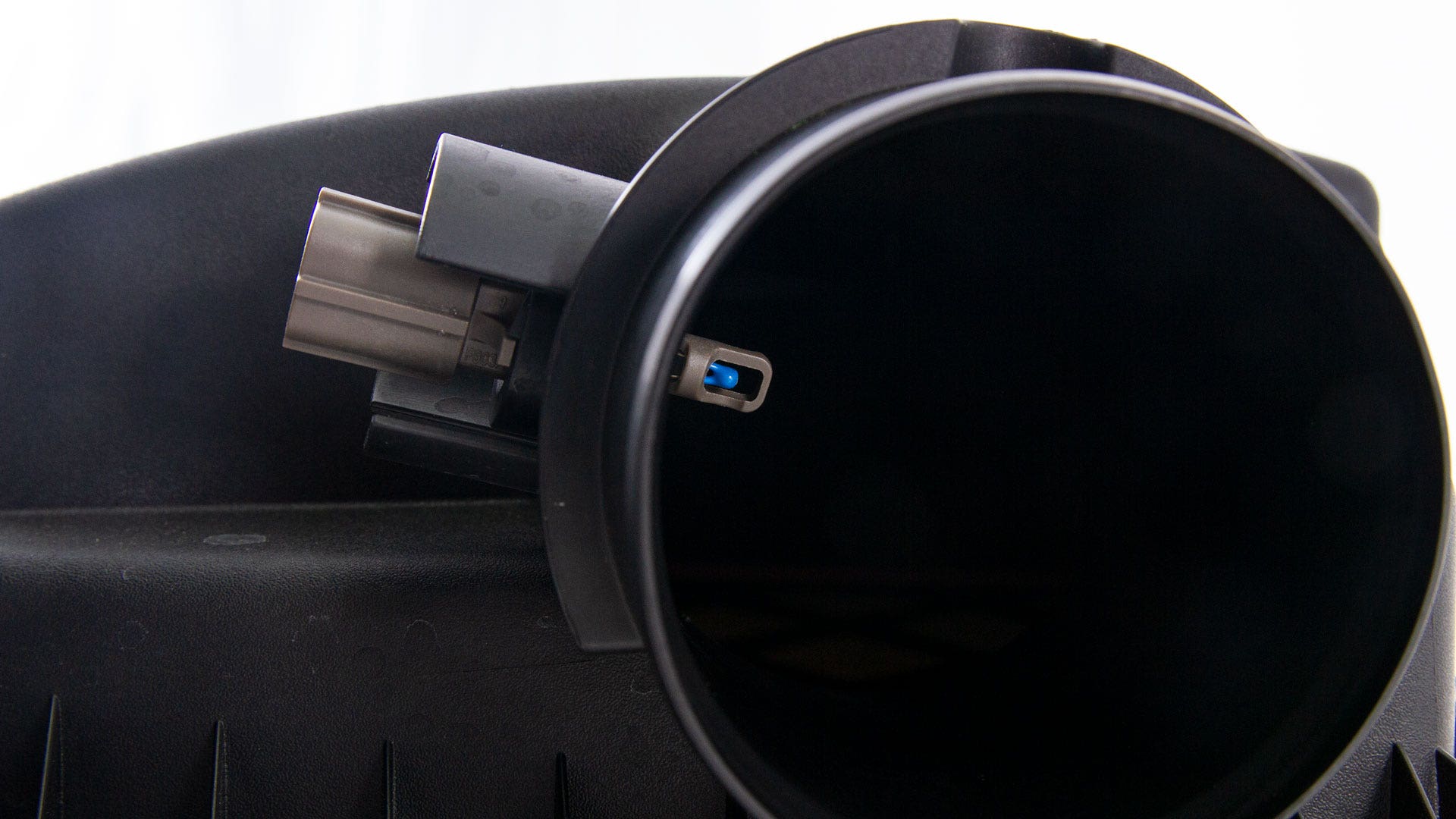
After the airbox, the air flows toward the turbocharger through a series of tubes. A small port on the side of the first tube provides vacuum to the brake booster when the manifold is pressurized by the turbo.

Further down the intake, however, lies something much more interesting. Before the air enters the turbocharger, it passes through the last section of the intake, an oddly shaped rigid plastic tube with four ports.
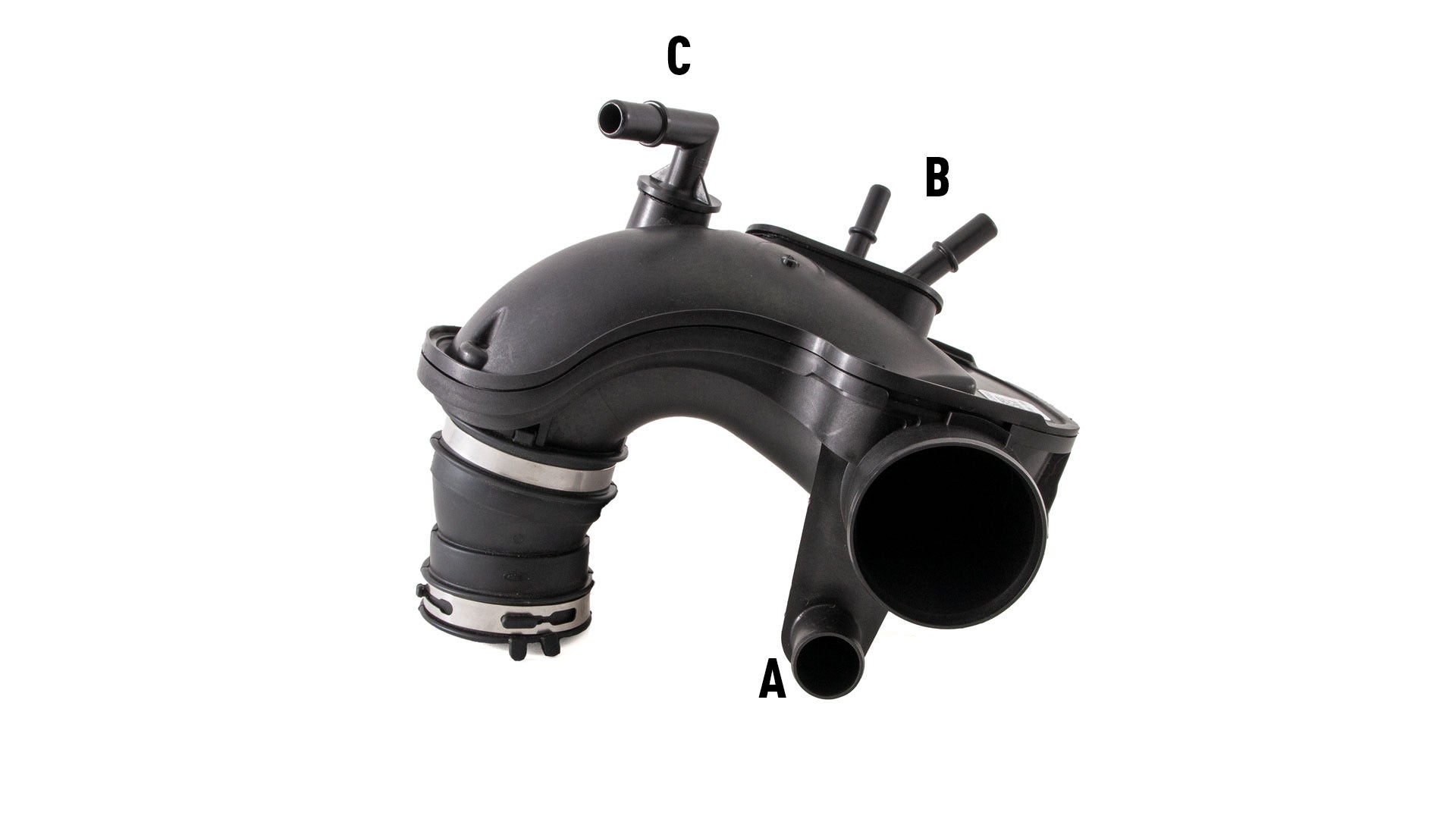
This portion of the intake plays multiple roles in the function of the engine and emissions systems. The port on the back of the tube (A) carries excess boost from the
bypass valve back into the intake. On the front of the pipe are three vacuum ports. Two of those ports (B) are for the evaporative emissions system, and the other (C) is for the PCV system. All three of these ports provide vacuum to
their respective systems when the turbocharger is active, but what's most interesting is what lies beyond them.
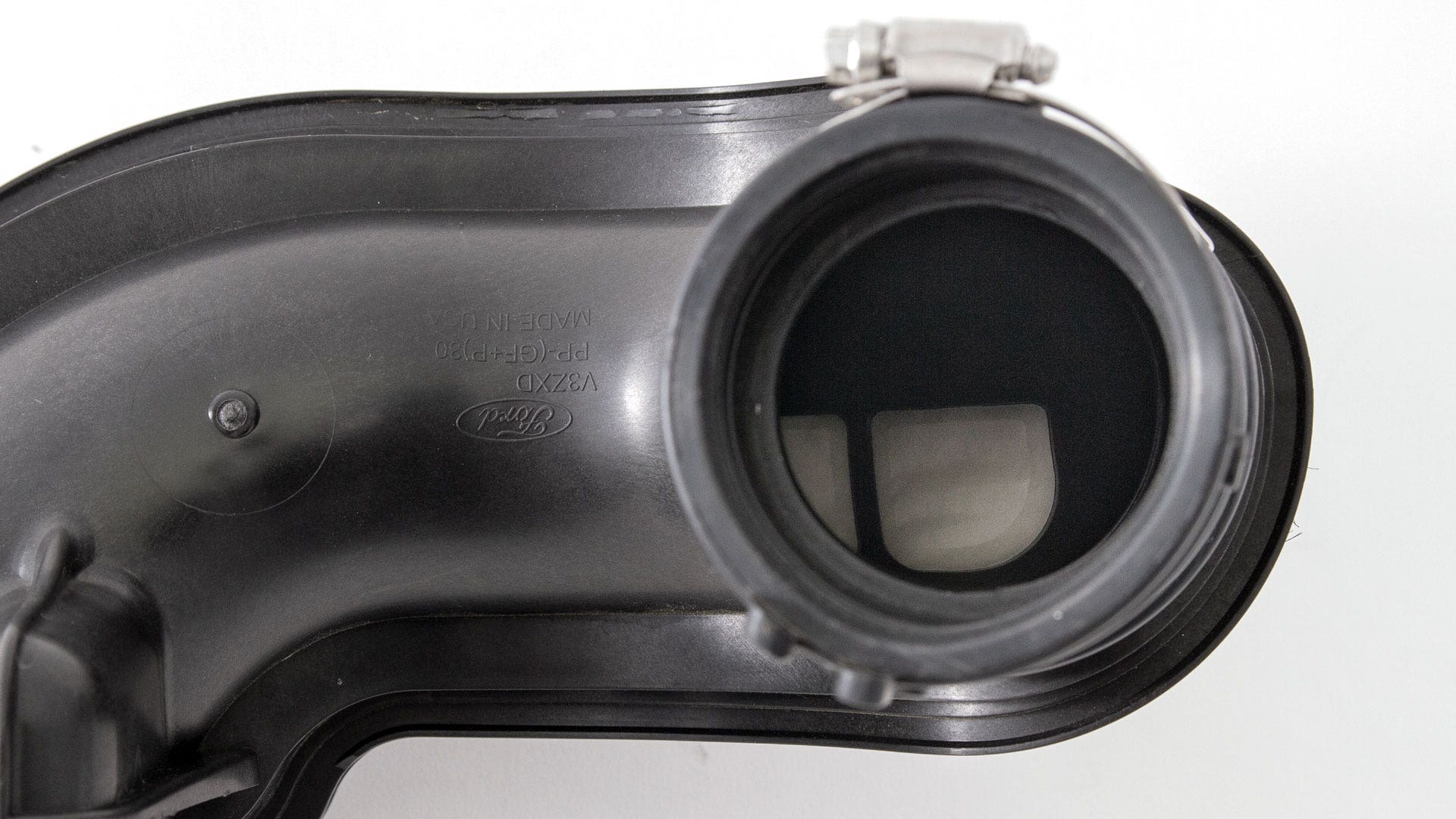
Inside the tube is a white cotton-like material with a fine mesh screen over it. The function of this filter isn't clear, but it could be a fuel vapor trap to help improve
emissions or possibly a filter to remove oil from the bypass valve return air. Another interesting feature hidden inside the tube resembles something we saw in the 2018+ Jeep Wrangler JL 2.0L intake. From the outside, the two
EVAP ports look like simple barbs. But on the inside, the two come together to form a venturi. As air passes over the end of this venturi, it creates more vacuum than the turbocharger would alone.
All these components play important roles in the function of the intake and, as we know from the JL Wrangler, we must be careful to keep the engine management system happy. In the next post, we'll be flow testing the stock intake to see where we can make improvements while keeping the check engine light at bay. In the meantime, feel free to let us know what you think and ask any questions you may have.
Thanks for reading,
-Steve





